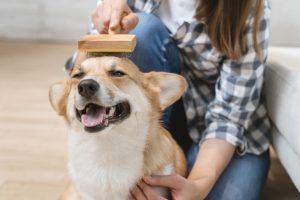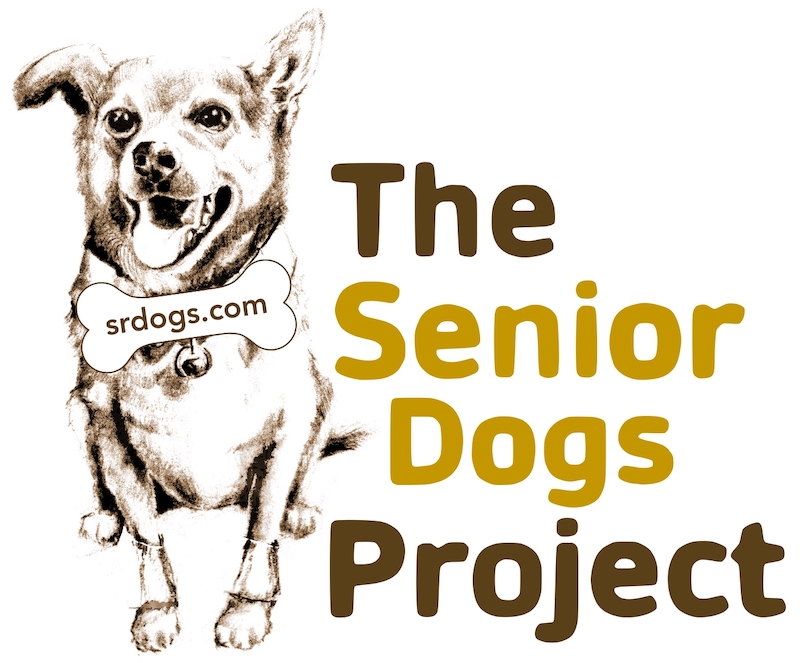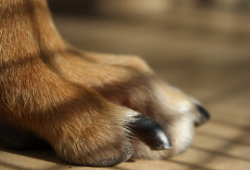 Keep your dog well groomed and his environment – bedding, water and food bowls, etc., very clean. Do all in your power to control fleas and ticks (without using toxic products, whenever possible). Brush your dog and massage or run your hands over your dog’s body every day. Make it an opportunity to notice fleas or ticks and any new lumps, bumps, or swellings.
Keep your dog well groomed and his environment – bedding, water and food bowls, etc., very clean. Do all in your power to control fleas and ticks (without using toxic products, whenever possible). Brush your dog and massage or run your hands over your dog’s body every day. Make it an opportunity to notice fleas or ticks and any new lumps, bumps, or swellings.
Grooming a senior dog is not just for looks. The coat and skin are the dog’s first line of defense against environmental attack — from such enemies as fleas, ticks, wetness, and cold. When the coat and skin are in poor condition, your dog becomes susceptible to disease or illness.
An older coat and older skin just can’t take care of themselves like they used to — because circulation and muscle tone aren’t as good as they were when the dog was younger. You can make up for the decrease in these functions with a grooming routine.
A daily grooming session with the proper tools is the first step. Brush and flea comb are two of the basics, but the specific brushes and combs you should use depend on the length and type of your dog’s coat. Check with your vet or groomer, or look at the labels on the various grooming tools at your pet supply store. There are also books and videos on grooming available at stores and through pet supply catalogs.
You may not have had the time to brush or comb your dog regularly over the course of the years; but it’s so much more important as a dog ages! Fifteen minutes is usually all it will take each day, but those fifteen minutes will save you time in the long run. You’ll keep your dog’s overall health at a high level, minimizing visits to the vet other than for regular check-ups.
Another reason for a daily grooming session has to do with an aging dog’s need for physical contact and attention. While puppies and young dogs are busy running around and tearing up the place, an older dog doesn’t have energy for such stuff. A grooming session can be an energizer as well as provide an interesting diversion for the dog. It is also an opportunity for you and your dog to experience the kind of closeness and physical contact that is reassuring and satisfying and that contributes to the dog’s overall sense of well-being — which, in turn, stimulates good health.
Regular brushing can lengthen the time between baths. Usually dogs don’t need a bath more than once a month, although some dogs have a natural tendency to be a little greasy or to play in some awful-smelling stuff. These dogs will need more frequent bathing. Although it always depends on the individual dog, in general, dogs with smooth, oily coats should be bathed only when necessary. A dog with a thick undercoat can go for six months without a bath. Dogs with long, curly hair can get a bath every four to six weeks.
Always bathe your older dog with warm water in a warm room. Cold will dry the dog’s skin and might cause chilling. Always use a very mild shampoo with an older dog, since older skin has a tendency toward allergy and dryness. Shampoos not especially formulated for use with a dog — even “baby” shampoos — should NEVER be used on any dog of any age. Don’t use a blow-dryer, which is too hard on the coat and skin. Instead, use thick, absorbent towels.
Use grooming sessions as a means of checking for tumors, growths, or changes in skin condition. Run your hands over all parts of your dog’s body — from stem to stern, along the abdomen, legs, ears, and tail. Early detection of a malignancy can extend your dog’s life by years. The skin, as the largest organ of the body, also can indicate internal health problems that may not be otherwise visible. Watch for dryness or roughness of the skin texture, and for any unusual symptoms.
Nails
Younger dogs can wear down their nails with the running around they do, making it less necessary to be strict about the time between trimmings. But an older dog tends to do less walking and running, so it’s critical to keep to a regular nail trimming schedule.
The older your dog is, the more critical it is to keep the nails at the proper length, primarily so that the dog can maintain some semblance of a regular exercise program without compromising skeletal alignment and muscle function.
Your groomer or vet can do the nail trimming, or you can do it yourself — with the proper tools and knowledge. If you plan to do the trimming yourself, you will need to get information about the correct tools and techniques for your particular dog. The Internet Dog Owner’s Guide has excellent material on nail clipping.
Ears
Keeping the ears clean and dry is good practice with a dog of any age. If you are brushing and combing your dog every day as we recommend, you’ll have a daily opportunity to examine and wipe the outer parts of his ears. You can do this with a tissue moistened with liquid ear cleaner.
Dogs who are still swimming in their senior years may need to have their ear canals dried after they go for a dip. You can do this simply with a tissue or soft cloth.
Be diligent about clean, dry ears with your senior dog, and you’ll minimize the risk of an ear infection. If you notice a bad odor or discharge from the ears, or if your dog starts shaking her head noticeably more frequently, see your vet immediately. A major infection could be brewing. Your older dog’s immune system isn’t working quite as efficiently as it did when she was younger, making it harder for her to rebound from an infection. (Excessive head-shaking may also injure the brain.)
Over the years the Senior Dogs Project has spent with older dogs, a few we’ve adopted have come to us with ear problems that the vets evaluated as being of long standing. Once the vet addressed the initial condition by flushing the ears, none of our dogs has ever again had an ear infection. According to one of the veterinarians we’ve seen, fleas are a major source of ear infections. Here at the Senior Dogs Project, we control fleas and keep our dogs’ environment clean, so we weren’t surprised to learn that there is a relationship between good flea control and good ear health.
Here’s the link for you to print out a chart that summarizes the Senior Dogs Project’s Ten Tips to Keep Your Senior Dog Healthy.

 different for each dog, the more often you do it the more accustomed to and amenable to it they will be.”
different for each dog, the more often you do it the more accustomed to and amenable to it they will be.”